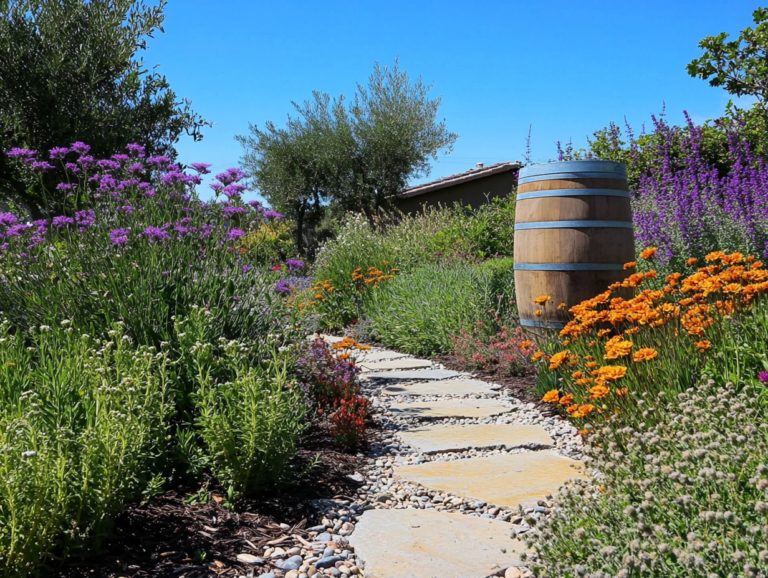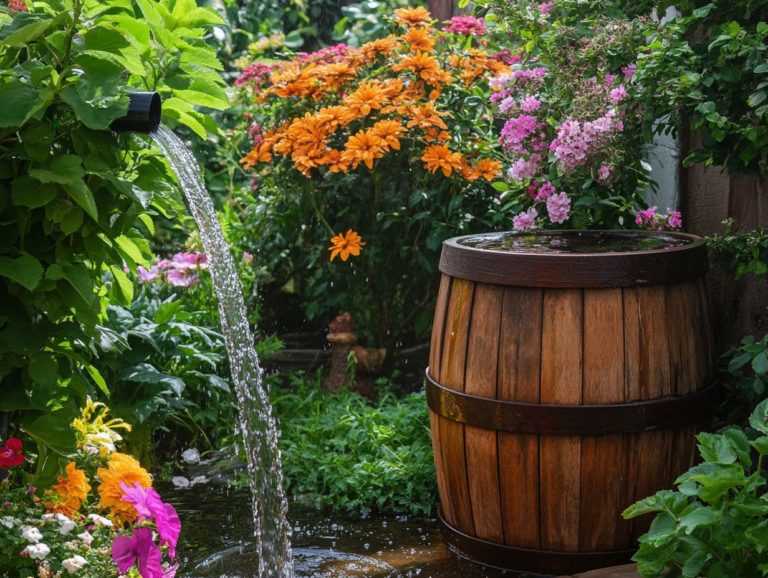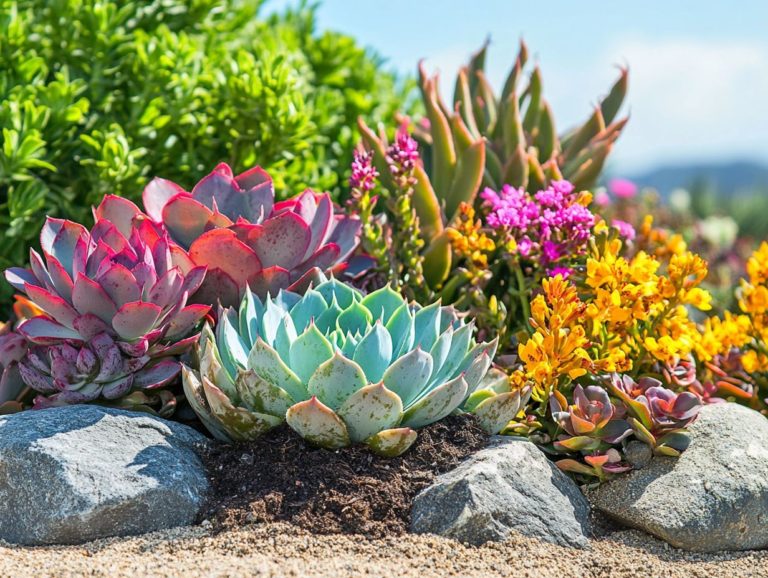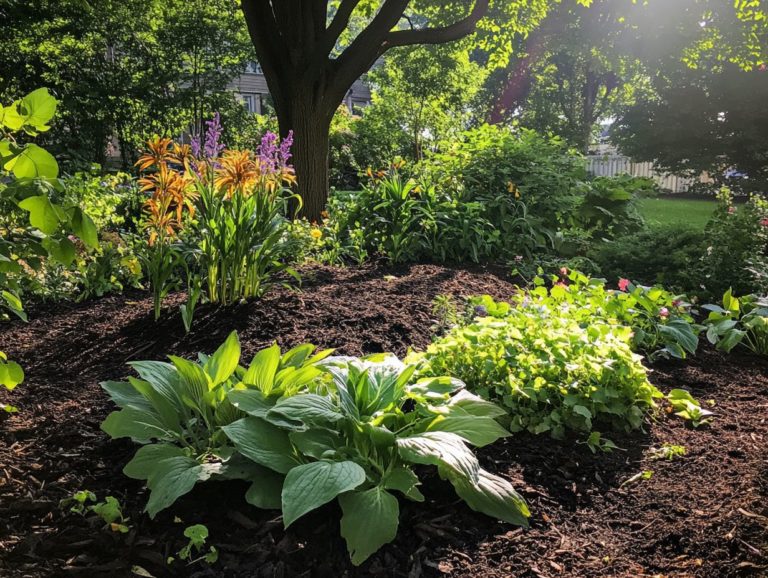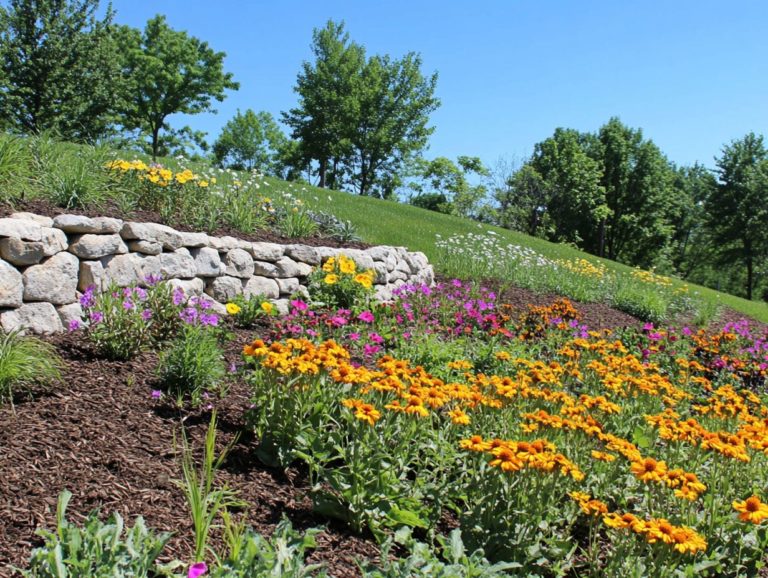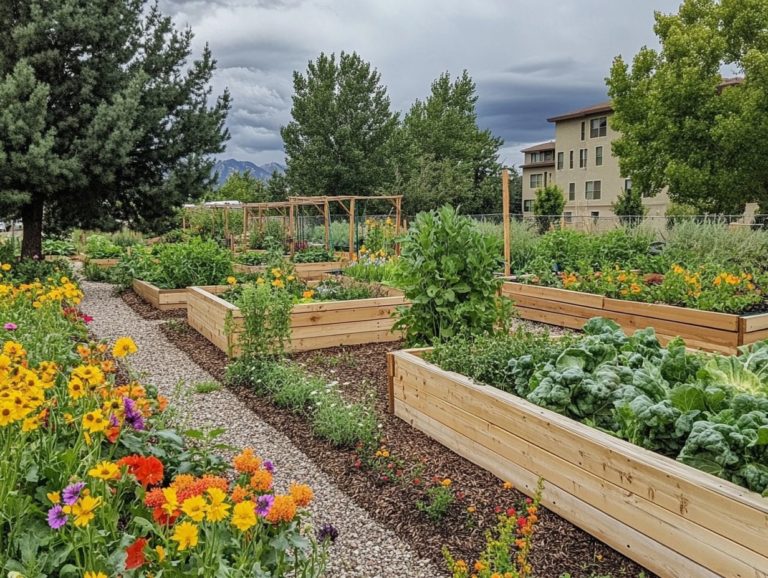How to Create a Swale for Efficient Water Use
Swales offer a remarkable and sustainable solution for managing water runoff and improving soil health. This article delves into what swales are, highlighting their numerous benefits and their role in water conservation.
You will discover how to select the ideal location for your swale, complete with step-by-step guidance on its design and construction. You ll also find essential maintenance tips to ensure lasting success.
Immerse yourself in this exploration and learn how to cultivate a flourishing landscape while conserving precious water resources!
Contents
Key Takeaways:
Here are the key takeaways you need to remember!
What is a Swale?
A swale is more than just a landscape feature; it s a sophisticated tool for water management. Picture it as a shallow channel that masterfully directs water runoff, allowing it to seep into the ground. This promotes soil conservation and helps with erosion control.
You ll find this ecological design in permaculture, a design system that works with nature to create sustainable environments, where contouring the land is key to managing stormwater and enhancing water percolation. This supports robust vegetation and soil health.
There are various types of swales at your disposal. Contour swales, for instance, follow the natural contours of the land, while vegetated swales incorporate plants to boost their water absorption capabilities.
These structures do more than just capture runoff; they create habitats for a variety of plants and animals and enhance soil moisture levels, making them invaluable assets in drought-prone areas.
Consider a well-designed crescent-shaped swale; it can effectively channel water while encouraging the growth of native plants. This leads to improved variety of plants and animals and better soil fertility.
The ecological advantages of swales go beyond mere water management; they also filter pollutants from runoff, contributing to healthier ecosystems and cleaner waterways.
Benefits of Swales
Swales present a wealth of advantages, including superior erosion control, enhanced soil conservation, and optimized water efficiency. These features make them essential in stormwater management and sustainable landscaping practices.
By emulating natural water channels, swales effectively regulate runoff while fostering a thriving environment for various plants and wildlife. They enrich the ecosystem in the process!
Water Conservation and Soil Health
Implementing swales is a game-changer for water conservation and soil health. They allow you to retain moisture and foster the creation of nutrient-rich soil, which benefits plant growth and enhances the overall functionality of the ecosystem.
Incorporating techniques like composting and planting a diverse selection of vegetation, such as strawberries and ferns, allows you to harness the full benefits of natural materials that help soil and ground cover. Compost enriches your soil with essential nutrients, while a variety of plants establishes a multi-layered environment that captures more rainfall and boosts variety.
Earthworks, carried out with earth-moving equipment, play a vital role in swale construction. They shape the land efficiently, ensuring proper drainage and water retention. Together, these methods enhance soil moisture levels and foster a more resilient and productive ecosystem.
Start your journey to a greener landscape today!
Choosing the Right Location for a Swale
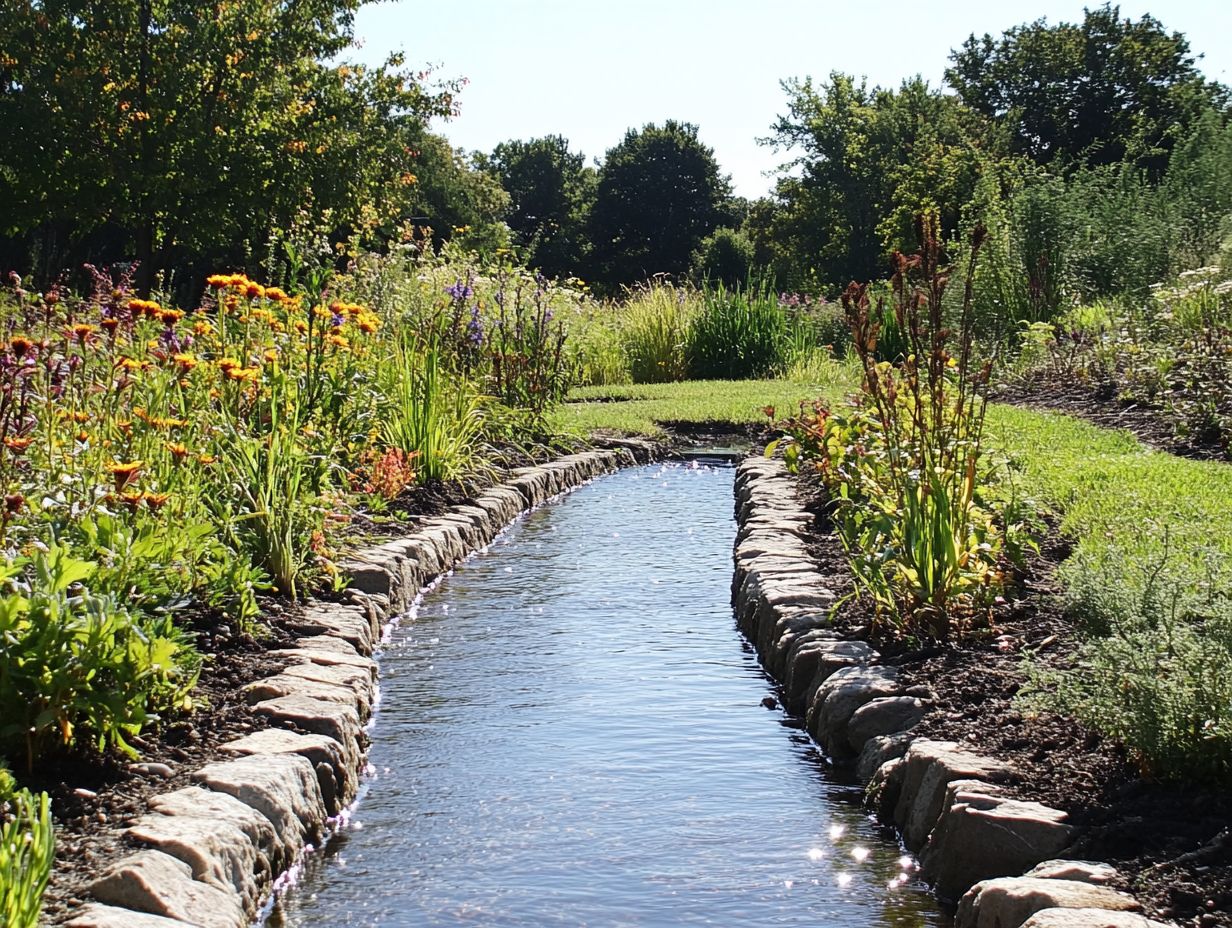
Choosing the ideal location for a swale is essential for success. Focus on drainage patterns, soil type, and landscape design.
Evaluate the topography and existing vegetation to make sure your swale works effectively. This will help manage runoff and improve water retention.
Factors to Consider
When determining the perfect spot for a swale, consider soil type, topography, and what you want to achieve with runoff control. These elements play a pivotal role in the swale s ability to channel water effectively and support the surrounding ecosystem.
Soil type significantly impacts permeability, or the ability of soil to allow water to flow through, and water retention. This affects how quickly the swale can absorb runoff. For sandy soil, expect rapid drainage great for areas with heavy rainfall. However, if clayey soils are present, you might need to adjust design features for slower infiltration.
Topography is equally vital; a swale on a gentle slope enhances water flow, while one on a steep incline might need reinforcement to prevent soil loss. Thoughtful management of vegetation can elevate the swale s effectiveness. Planting native species stabilizes the soil and filters pollutants from runoff, fostering biodiversity.
By grasping these aspects and their interactions, you can design swales that fulfill their purpose and flourish within the landscape.
Designing and Building a Swale
Designing and constructing a swale entails a series of meticulous steps that demand thoughtful planning and precise execution. You’ll use earth-moving equipment and digging tools to shape the contours for effective water management and passive overflow.
By following a systematic approach, you can ensure that the swale fulfills its role in landscape restoration and sustainable agriculture, while maintaining both functionality and visual appeal.
Step-by-Step Instructions
The process of building a swale unfolds through methodical steps: site assessment, design planning, digging, and installation. Using earth-moving equipment, shape the channel for effective water management. This structured approach ensures the swale functions optimally and integrates seamlessly into the landscape.
- Begin with an initial site analysis to identify topographical features and soil types.
- During the design planning phase, consider local climate conditions and how water is likely to flow across the area.
- Once digging is complete, the installation phase requires layering various materials gravel or mulch to enhance water infiltration and support vegetation growth.
- After the swale is installed, focus on planting native species that stabilize the soil and deliver ecological benefits.
Pay attention to maintenance. Regular inspections and adjustments to plant choices are vital for the swale’s longevity. To measure success, utilize water management metrics, monitoring runoff reduction and soil moisture levels over time.
Maintaining a Swale
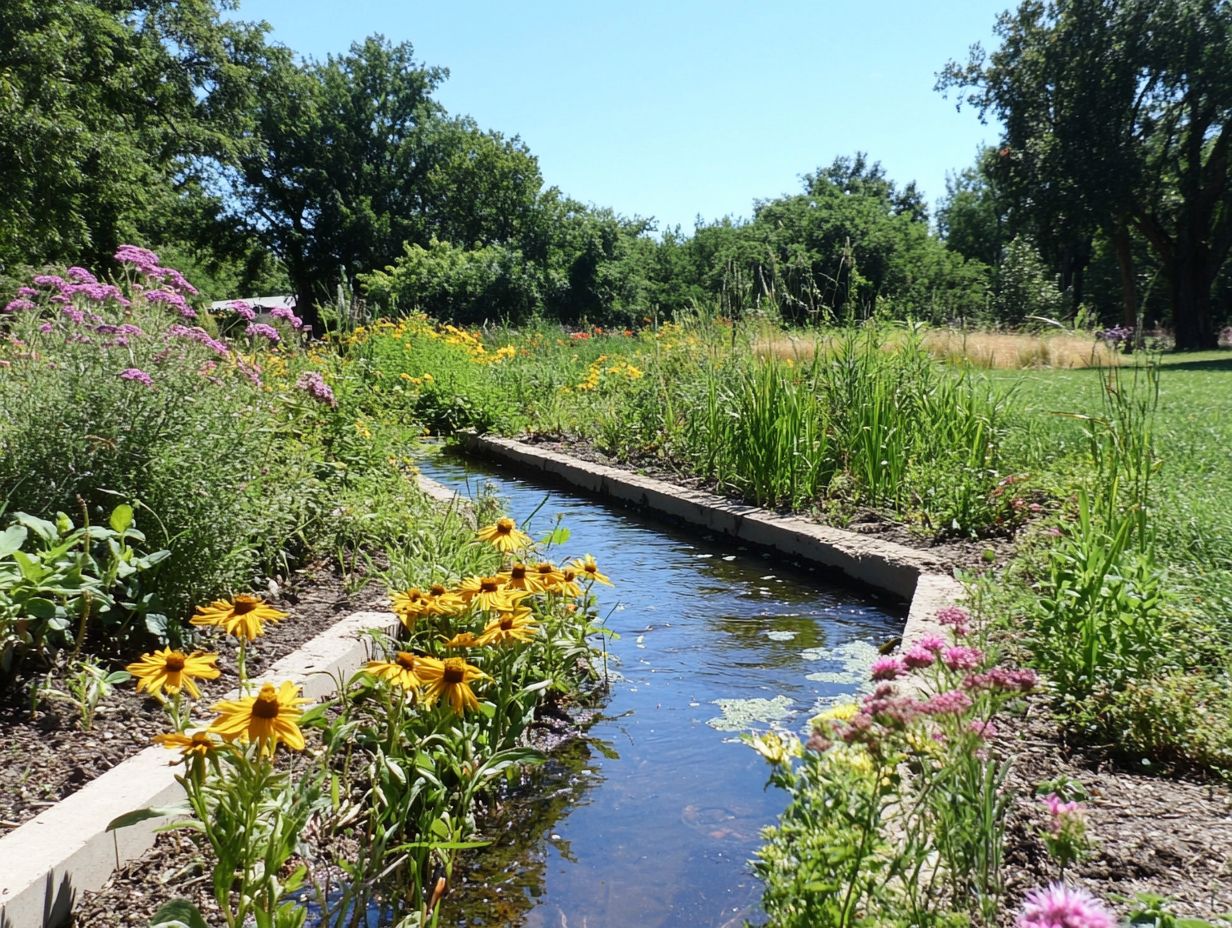
Regular maintenance is crucial! Ensure your swale thrives and effectively manages water for years to come. This involves conducting routine inspections, managing vegetation, and assessing soil moisture to preserve water efficiency and ecological balance.
By taking a proactive approach, you can enhance the swale’s capacity and support the surrounding biodiversity.
Tips for Long-Term Success
To achieve long-term success, implement maintenance protocols that include regular checks twice a year and adjustments aimed at enhancing biodiversity and maintaining habitat quality around the swale. Embracing eco-friendly practices can significantly boost the swale’s effectiveness over time.
Schedule biannual inspections to assess the health of the vegetation and watch for invasive species that could disrupt the ecosystem. Keep a record of rainfall patterns and soil moisture levels to gain insights into the swale’s drainage capacity and anticipate necessary changes.
Consider adjustments like strategically placing mulch or rocks to effectively manage erosion and sediment buildup. Planting native vegetation not only enhances local biodiversity but also creates a natural filtration system for runoff. Take these steps, and watch your swale thrive!
Alternative Water Conservation Methods
Explore alternative water conservation methods alongside swales to enhance your approach to managing water resources and improve your garden design.
Incorporate techniques like rainwater harvesting, efficient irrigation systems, and innovative composting methods. These practices complement the functionality of swales and significantly boost sustainability and resource efficiency in your landscaping projects.
Embracing this diversified strategy leads to a more resilient and thriving outdoor space, contributing to habitat quality and biodiversity enhancement.
Comparing Swales to Other Techniques
When comparing swales to other water management techniques like rain gardens and permeable pavement, understanding how each method works and the unique benefits they offer for stormwater management and land stewardship is essential. Swales are particularly effective at directing and absorbing runoff, while rain gardens enhance water quality and provide attractive landscapes.
Permeable pavement allows water to seep through surfaces such as driveways and parking lots, helping with groundwater recharge which means aiding water to soak back into the ground. However, it may require more maintenance to remain effective.
A case study conducted in urban settings showed that swales could reduce runoff by as much as 50%, effectively managing significant volumes during storms. In contrast, rain gardens excel at filtering pollutants, especially when filled with native plant species, improving downstream water quality and creating vibrant habitats.
By integrating these techniques, you can address the unique challenges each site presents, ultimately promoting healthier ecosystems and soil moisture, and building more resilient communities.
Frequently Asked Questions
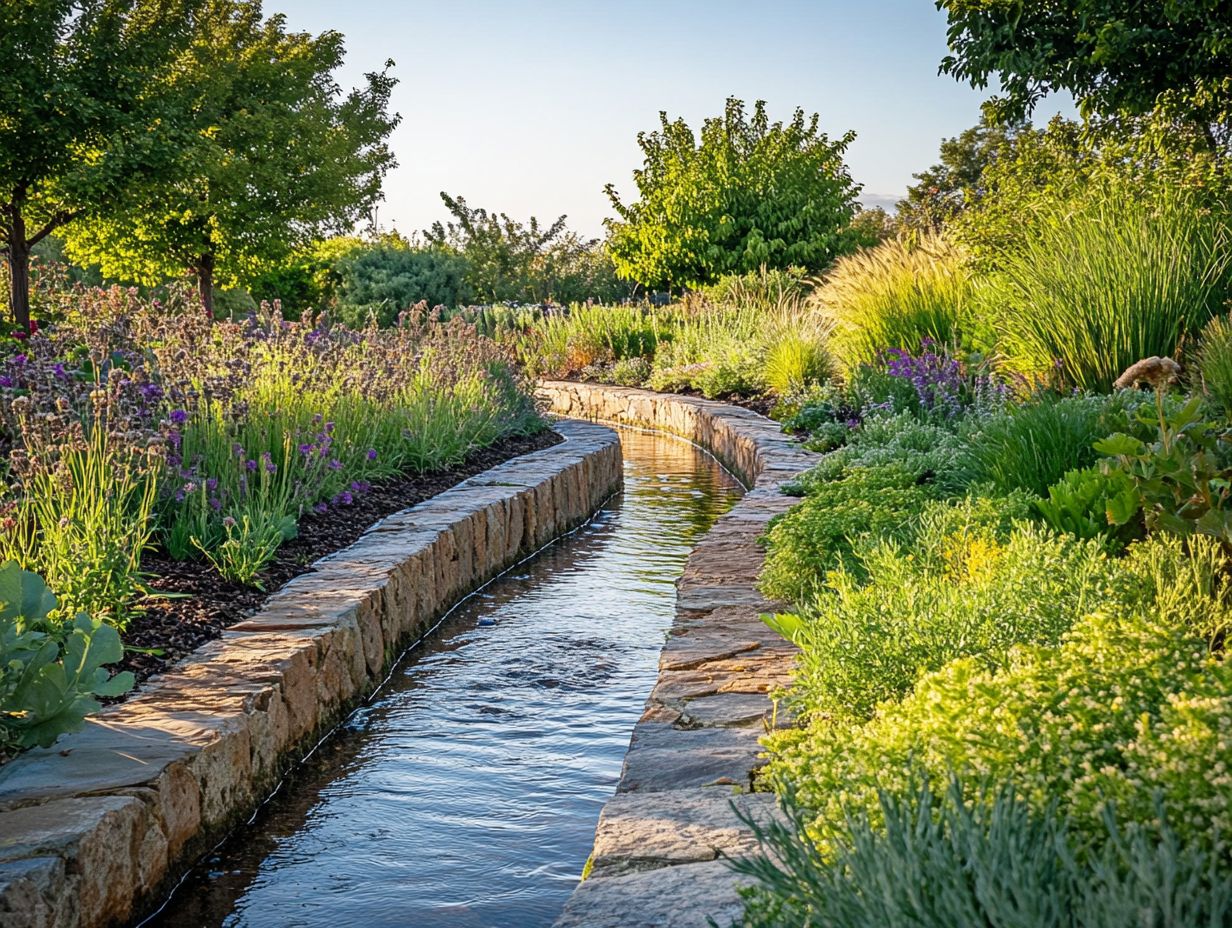
What is a swale, and why is it important for efficient water use?
A swale is a shallow channel designed to catch and slow down the flow of water, allowing it to infiltrate into the soil. It is vital for efficient water use because it helps reduce runoff, minimizes erosion, and promotes groundwater recharge.
What materials do I need to create a swale?
You’ll need shovels, rakes, measuring tape, stakes, string, and organic compost. For larger projects, you may also need a level and a wheelbarrow.
Where is the best location to build a swale?
The best location for a swale is on a slope or in an area where water tends to accumulate. Position it to effectively catch and divert water away from structures and toward areas where it can be used for irrigation or allowed to soak into the ground.
How do I determine the size and shape of my swale?
The size and shape of your swale depend on the slope of your land and the volume of water you need to divert. A general rule of thumb is to make the swale 1-2 feet deep and 3-4 feet wide. The shape can be curved or straight, based on your preferences and land layout.
Feel free to ask more questions or share your experiences with swales and water conservation!
Want to learn how to build a swale? Let s dive in!
A swale is a shallow ditch designed to manage water runoff. Check with your local government or homeowners association for permits. Requirements may vary based on your location and project size.
How often should a swale be maintained?
Don’t wait! Inspect your swale every year to keep it thriving! This includes removing debris, checking for damage, and adding compost to restore nutrients.

